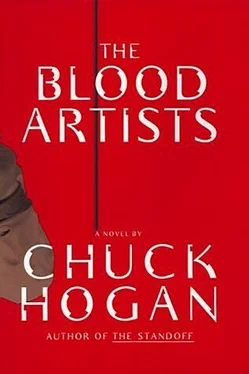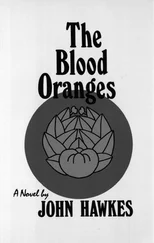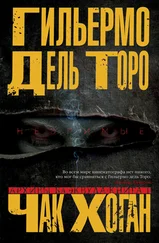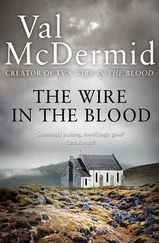Moving lights brightened the tree branches outside the window and directed shadows across the ceiling. Headlights in my driveway, though I expected no one. I left my glass on the sill and walked to my bedroom window for a better view, arriving just in time to see a car back out and pull away.
That second night was longer than the first. Sleep teased but never fully embraced me.
The next day’s situation log noted that Peter Maryk had returned from Nevada and assumed on-site command of the Orangeburg investigation. Neither one of us initiated communication with the other. I continued my own multipronged investigation, immersing myself in all aspects of Orangeburg, while simultaneously pursuing the code names and the Special Pathogens budget — which I found to be padded with overruns and blind outlays exceeding $17 million.
I left the office only once that morning, to drop in on Lab Safety in Building Four under some pretense in order to procure a Postprick Kit. In the toilet stall of a nearby washroom, hiding like a junkie in a train station, I administered the preventive HIV and hepatitis series. I was counting on this to relax my mind.
Peri Fields was waiting outside my office door when I returned.
“Hi,” she said, and I stopped near. Her light brown hair was done up lightly in a loose bun, run through expertly with a pencil. “You weren’t answering my pages, so I thought I’d just drop by.”
“Orangeburg,” I told her. I was having a difficult time meeting her eyes.
“Were you just out for lunch? We could have—”
“No. Just getting some air.”
It was her turn to nod. She crossed one heeled shoe over the other and held her tablet in both hands at her waist. “You know I’m not asking for anything,” she said, still smiling. “We can go as fast or as slow as you want.”
“I know,” I said. “But right now I need to give this investigation everything I...”
My words trailed off. She was studying me. She was looking at my hands.
“You’re wearing gloves,” she said.
I looked at them myself, a worm of guilt starting up my back. “And?”
“Nothing. Except that — you’re one of the few here who didn’t.”
“My image.” I nodded.
These words wounded her more deeply than I expected. They warranted an apology which, for some reason, I did not give.
“I’m fine,” I said. She reached out to me as I started past her for my door, her hand brushing my bare forearm, just below my shirtsleeve. I jerked away.
She turned and stood in the doorway, stunned, as I shut the door.
I did not leave my office the rest of the day. Updates from Orangeburg continued tonguing out of my printer. The White House press secretary had left three messages since my on-camera comments in Stockholm, but I did not respond. Everything else paled next to the outbreak.
My search under the “Dr. Christian” pseudonym led me to case reports corresponding to the mystery code names, buried in an unlabeled Special Pathogens file of year-old interdepartmental performance reviews. The files were encrypted for confidentiality, but all BDC documents were accessible to the director at his discretion.
Downloaded, the case reports contained detailed medical histories of the three apparently healthy subjects, BLOSSOM, LANCET, and MELKMAID, but going back only three years and listing only addresses, no names: Two of the subjects resided in the Atlanta area, the third outside Boston. My thirst for more information, coupled with a reluctance to return to my empty house, compelled me to pursue the matter, without further success, long into the evening.
That night back at Diver Bridge, I paced. My palms and the creases of my knuckles remained cloyingly moist; repetitively, I washed and dried my hands. The bruises on my stuck hand, the ones caused by my first scrubbing out the wound, were not going away. I wandered upstairs, dreading the night that was already upon me.
I discovered an empty bar glass on the windowsill in one of the bedrooms, and for a few frantic minutes believed a stranger was inside the house with me. Headlights appeared in my driveway again, and I rushed down the hallway to my bedroom to look. I watched a car slow nearly to a stop at the bottom of the drive, then strangely pull away.
I remembered my behavior toward Peri, and tried to call her, but had some difficulty using my tablet. A vague sense of uneasiness overcame me like a chill.
I went to bed, and watched the ceiling for headlights. I rolled the Orangeburg investigation over and over in my head, but could not get it straight; fragments from my own life kept intruding, as though like electrical wires the two concerns had somehow become crossed.
I dozed briefly, on and off, each time awakening to the shaded room as though summoned by name. In the dark corners of my bedroom and the furls of the curtains hanging off my windows, faces appeared, watching me, trying to speak. They were the faces of the camp workers. Something terrible was happening to me.
The next day I took care to encounter no one, arriving at work well before seven. Rescheduled appointments were stacking up, jamming my calendar into the weeks and months ahead, but without consequence, as my future now was clear: Once free of Orangeburg, I would tender my resignation to the president. There was relief in this decision — the impending resumption of my life’s work, a return to the sterile safety of the BDC labs — which freed me to further indulge the worm of my consuming obsession with Orangeburg, poring over the scores of updates and summaries flowing hourly from South Carolina.
The outbreak once again, by hard work, a miracle, or a combination of both, had been successfully contained. Only two cases had been reported outside the hospital, and both were discovered through contact tracing of recent visitors and duty isolated. Hopes soared, but neither visitor was found to be the source of the outbreak, and rather each had become infected inside the hospital like all the rest. The disease was running its course, and there was still no indication of how Plainville had reemerged among a bedridden group of catatonics.
The virus confounded me. My notes from that morning, scribbled shakingly in black felt pen on the back of a hard copy of an autopsy photograph:
Latency period between infection and symptom onset 2–4 days; immuno-compromised develop to termination in as few as one day total. Plainville growing more destructive to blood in final stages, breaking down platelets and albumin, flooding organs with mush. Virus in constant flux. I.S. excited to overload, profound autoimmune response. Symptomatological spiral Win 2–4 days, to termination w/in 4–6 days total. Cause of death: grand mal seizure or pulmonary edema, if no opportunistic injection — pneumonia, staph, septicemia, others. Transmission via: blood contact, respiration, urine spatter, w/trace survival in sputum, saliva — even tears. 1. How, in limited exposure, do dramatic genetic mutations still occur — all virus-beneficial? (Still no link to previous outbreaks, and no spread outside hospital: Luck?? Missing something??) And 2. How to account for P-ville growing more virulent AND more deadly at same time? Unprecedented.
The only bright points of the outbreak were the prognoses of two of the four patients, the ones receiving the MILKMAID sera protocol. Astonishingly, each appeared to be successfully staving off the effects of full-blown Plainville. Equally provocative was the attention paid this development in the reporting materials generated by the Special Pathogens Section: none. I established a new file on my personal tablet, “Investigation.Maryk,” and copied into it all information relevant to the mystery sera, including the budget discrepancies and Peter’s dummied reports.
Читать дальше












